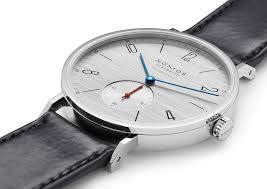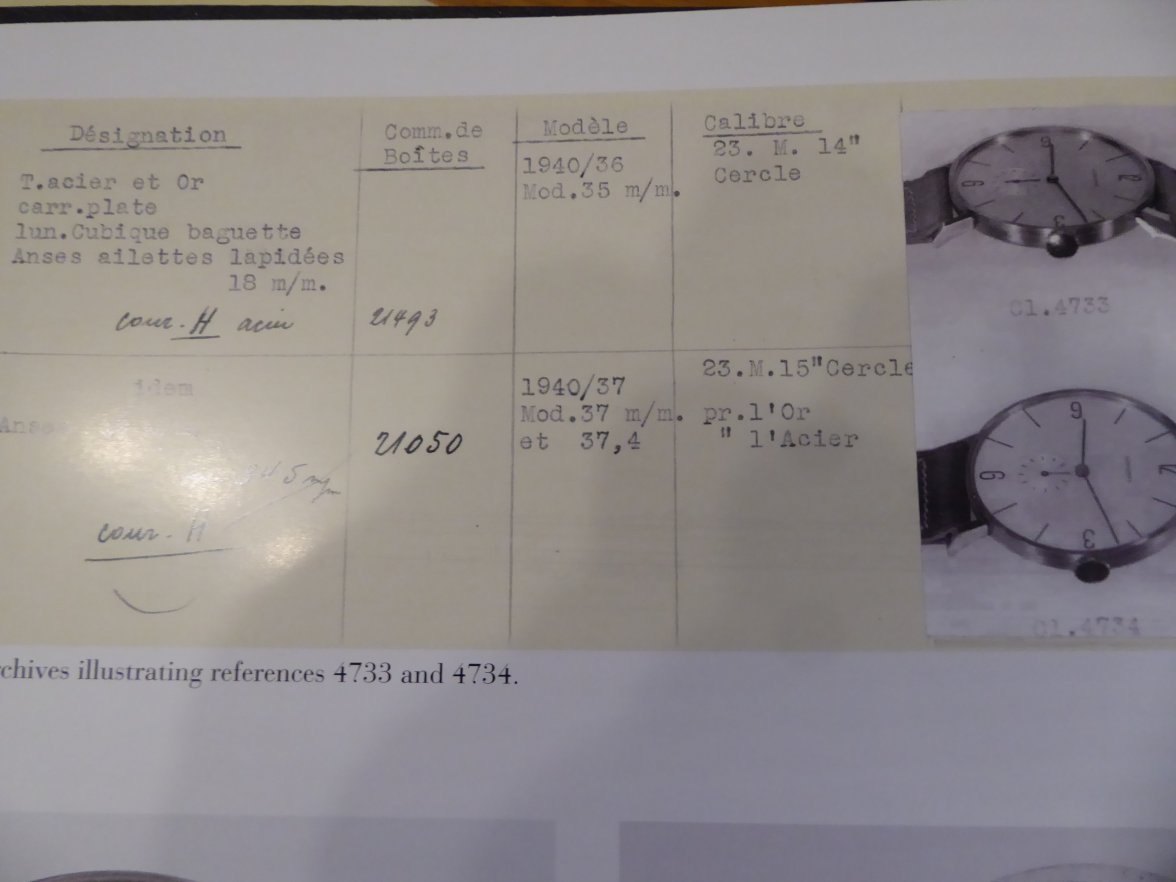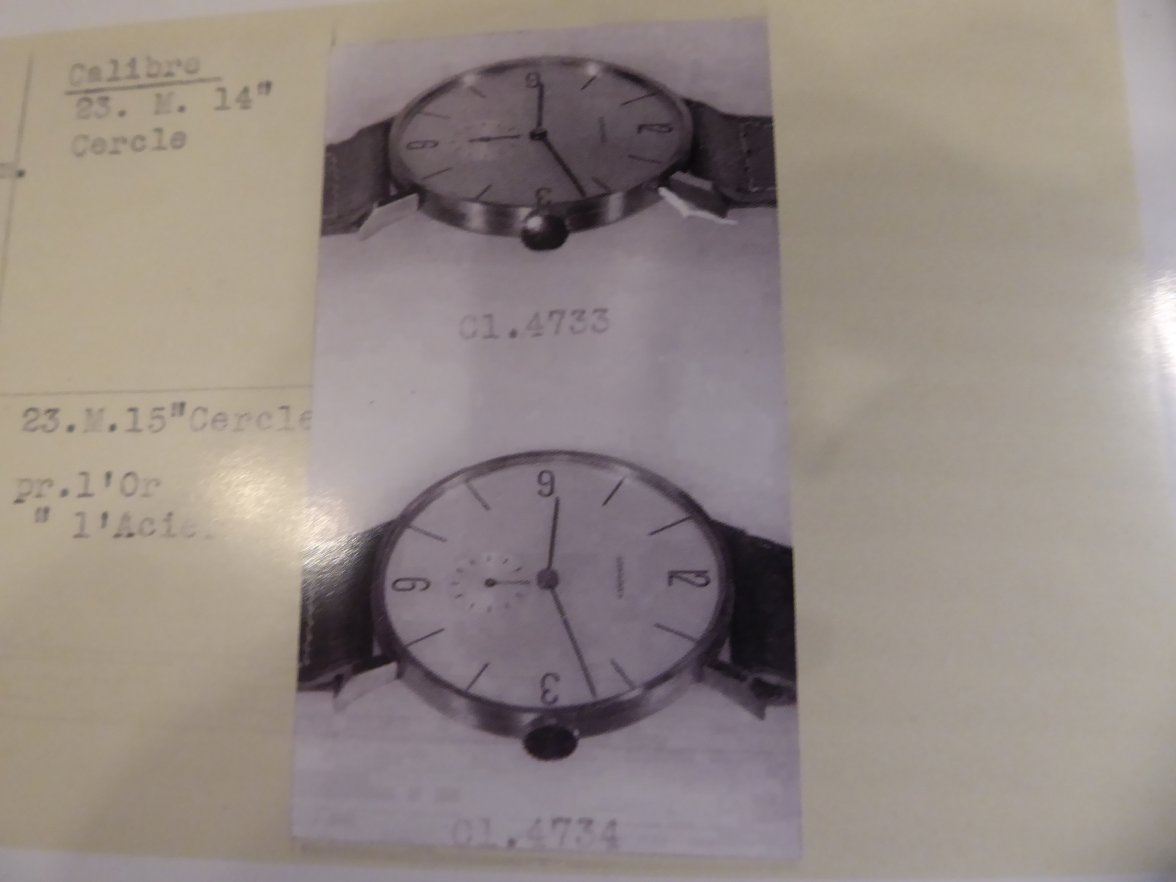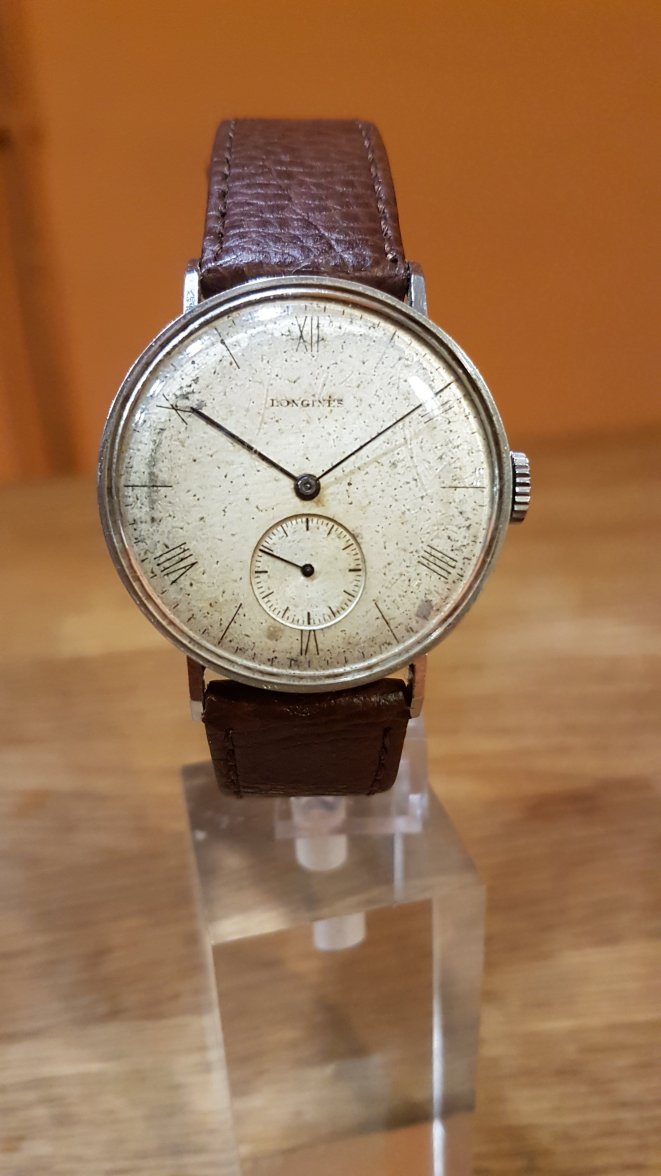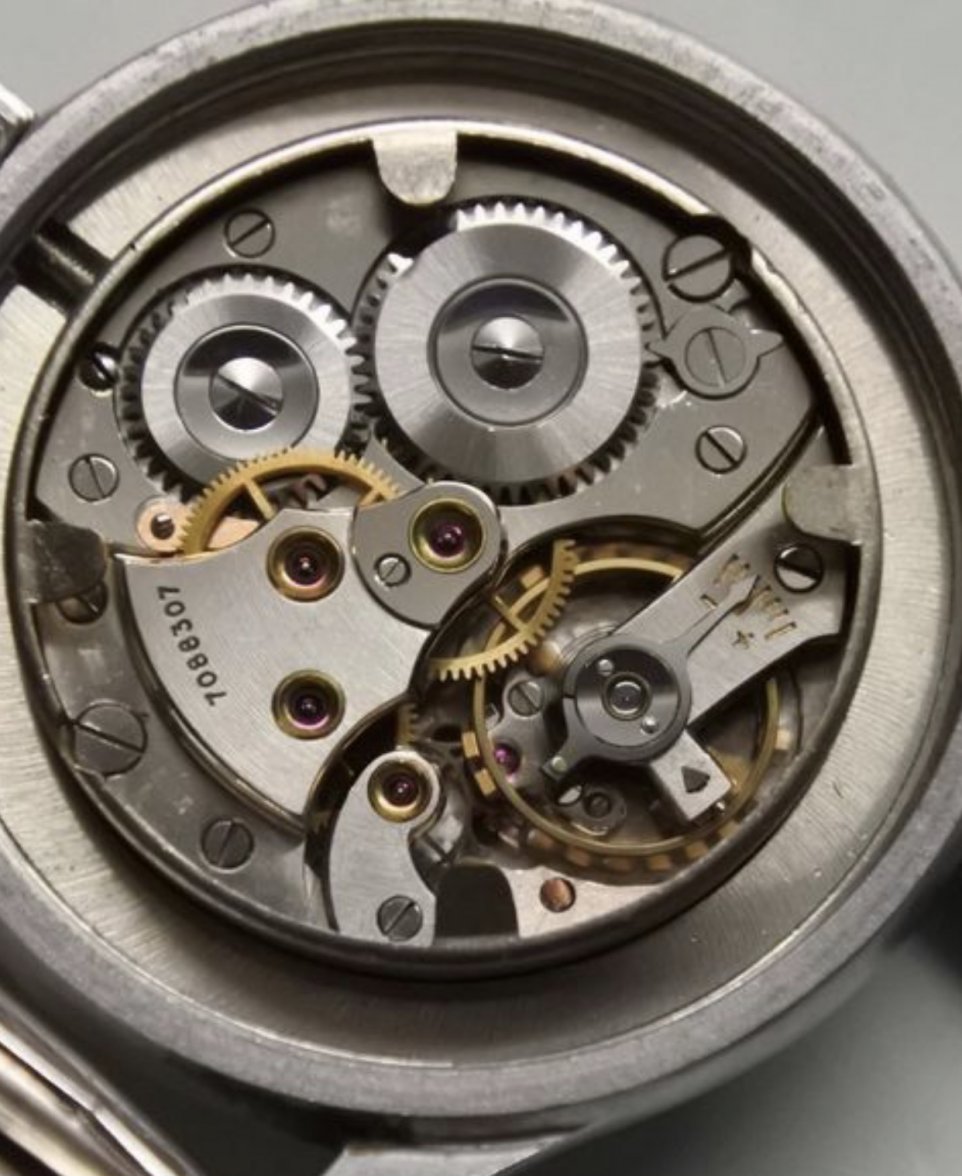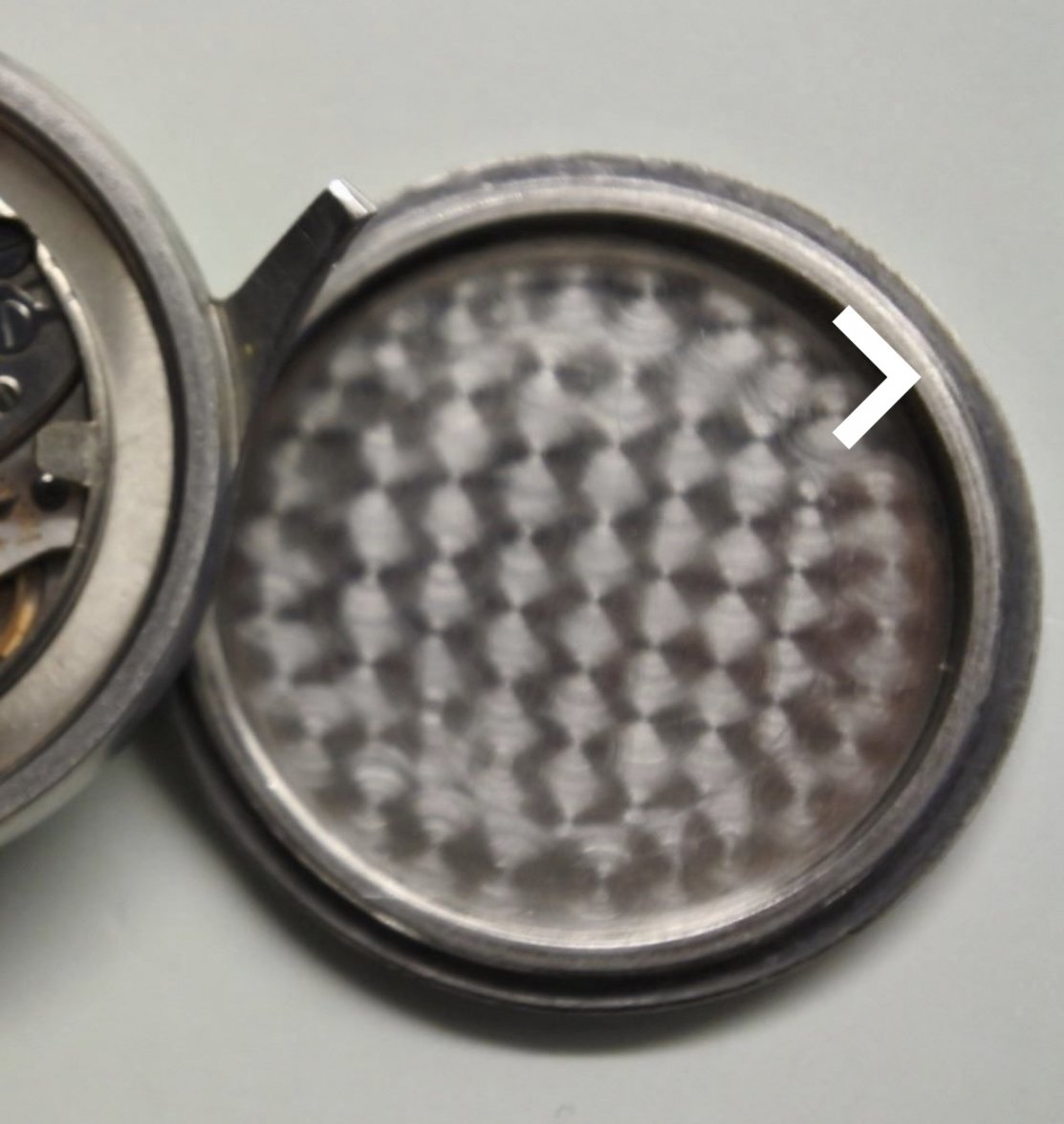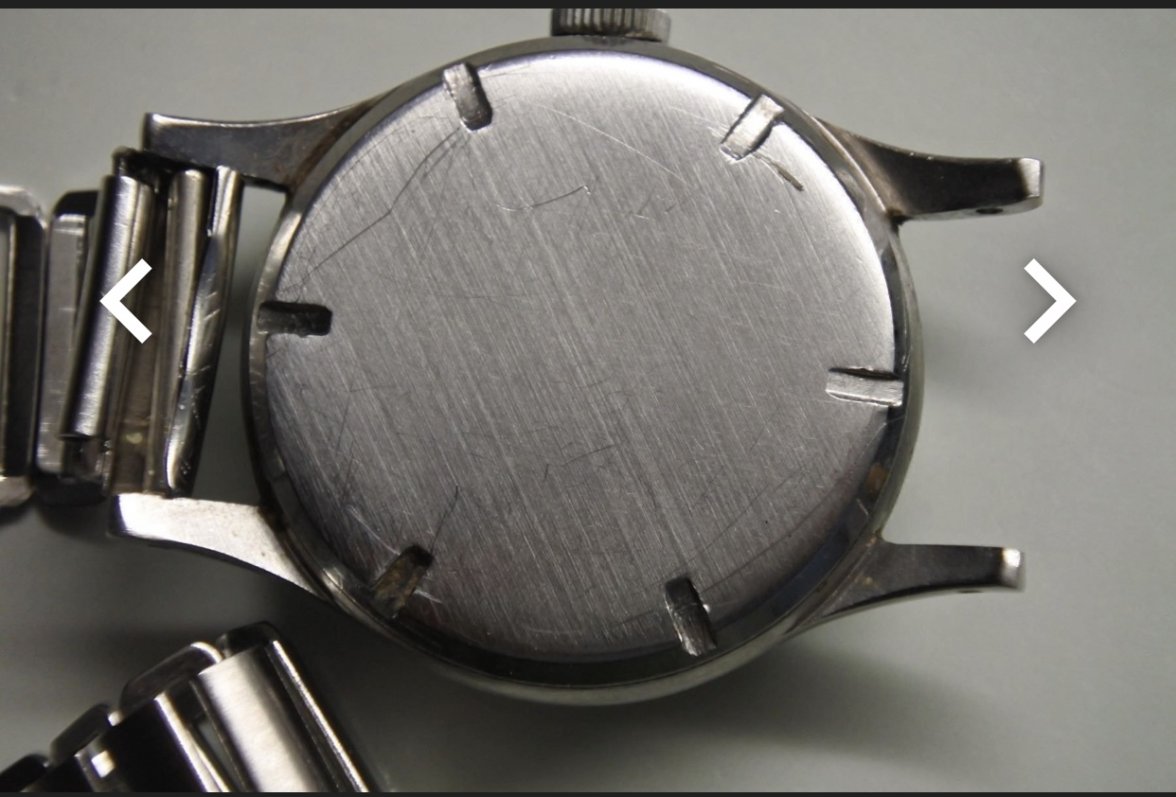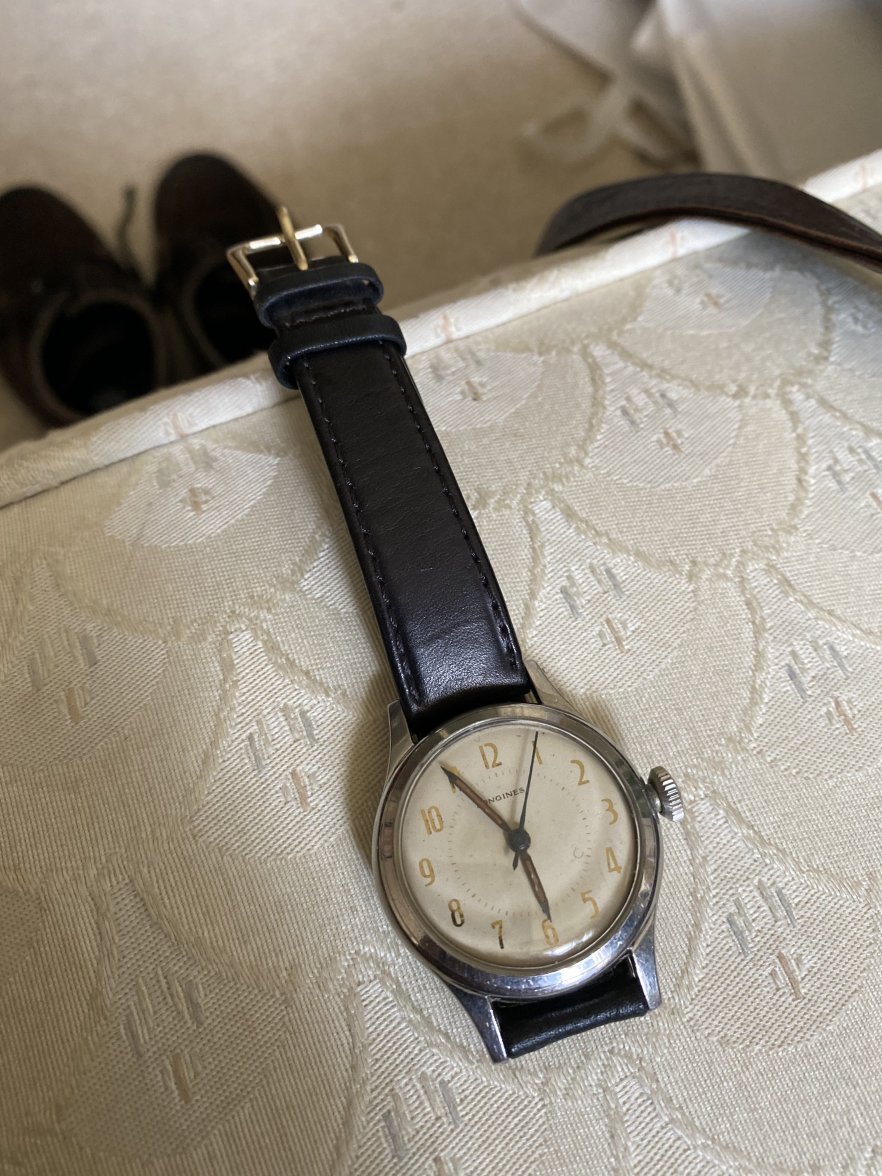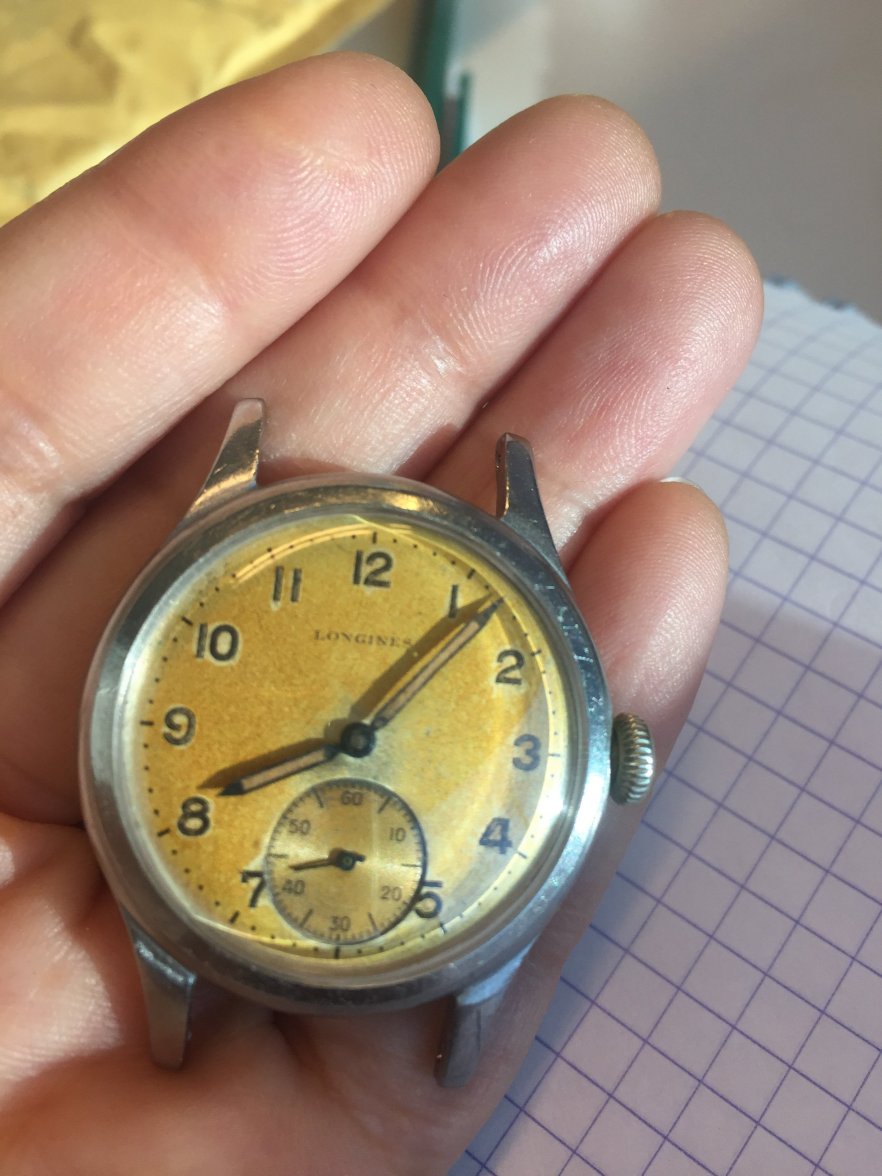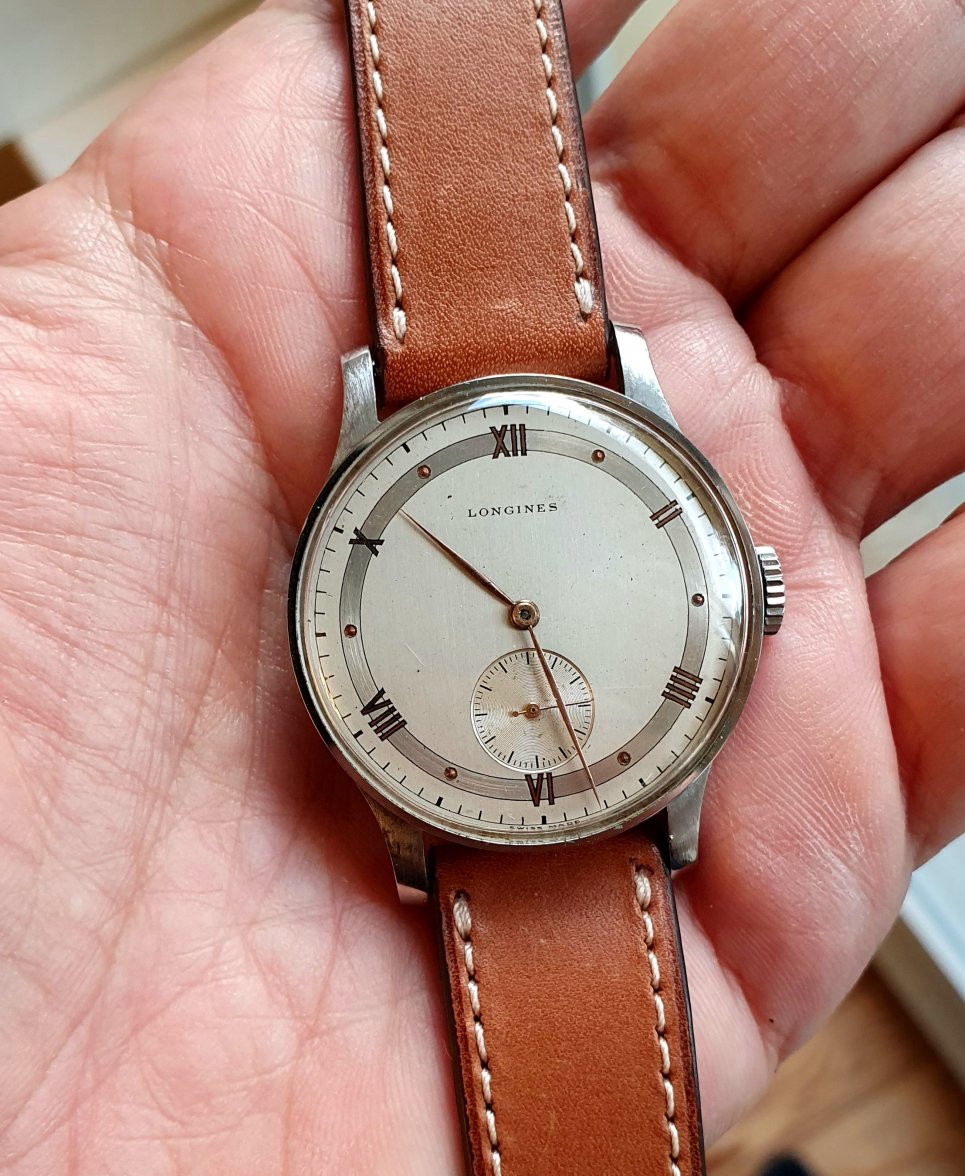Longines in the 40s...
BlueHands
·I must admit I haven’t inquired as to whether the drilled lugs are original on my 35mm example but why would they not be?
Yes, Syrte, there is no reason to let it go, regarding the fact if the lugs are fix or not. Case design is straight and simple, NOMOS/Glashütte has it actually in their portfolio of modern watches for the "Tangente". However Longines did it once, never mind, if it pleases you today.
Rumar89
·Here’s a strange sei tacche for you guys:
- Movement is unmarked, except for the serial number. I’ve never seen one of these (believe it’s a 23M) that didn’t have at least Longines engraved on the movement.
- Case is unmarked. Would expect to see the order code number on the back and Longines on the inside of the case back.
- Movement is unmarked, except for the serial number. I’ve never seen one of these (believe it’s a 23M) that didn’t have at least Longines engraved on the movement.
- Case is unmarked. Would expect to see the order code number on the back and Longines on the inside of the case back.
Syrte
·I looked into it in december. the movement number indicates it was supposedly sold in 1947 to Wittnauer in the US even though there are no LXW import marks on the movement.
I have my ideas about it, but what’s clear is that the Longines historians can only call it a marriage of sorts, it’s been sitting for a few months and very overpriced given the lack of a coherent archival record.
I have my ideas about it, but what’s clear is that the Longines historians can only call it a marriage of sorts, it’s been sitting for a few months and very overpriced given the lack of a coherent archival record.
RLC
·imfagent449
·Beautiful watches and pictures. I have left a lot of mine back in Melbourne in a box for a few years.
I think I have a few from the 1940s. I shall have to take pictures the next time I am back there.
I think I have a few from the 1940s. I shall have to take pictures the next time I am back there.
imfagent449
·Found one.
I believe it is a french market 10L. I haven't seen others like it. It doesn't say swiss at the bottom. Looking at the lettering closely, I think the dial may be original but not sure.
The indices are like a gold mirror.
I have to search the watch photography forum to work out how to post pictures that actually do the watch justice.
I believe it is a french market 10L. I haven't seen others like it. It doesn't say swiss at the bottom. Looking at the lettering closely, I think the dial may be original but not sure.
The indices are like a gold mirror.
I have to search the watch photography forum to work out how to post pictures that actually do the watch justice.
DirtyDozen12
·Found one.
I believe it is a french market 10L. I haven't seen others like it. It doesn't say swiss at the bottom. Looking at the lettering closely, I think the dial may be original but not sure.
The indices are like a gold mirror.
I have to search the watch photography forum to work out how to post pictures that actually do the watch justice.
imfagent449
·@DirtyDozen12 - Yes, that makes sense. Although I suspect that the redial was from quite a long time ago - just from the design.
Do you know why some movements are 10L and others are 10.68z while others are 10.68N?
For example, why are some called 25.19 (or whatever it is) and some 9L (or 9LT).
From what you say, it doesn't have to do with going from gilt to rhodium plated.
Do you know why some movements are 10L and others are 10.68z while others are 10.68N?
For example, why are some called 25.19 (or whatever it is) and some 9L (or 9LT).
From what you say, it doesn't have to do with going from gilt to rhodium plated.
GuiltyBoomerang
·@DirtyDozen12 - Do you know why some movements are 10L and others are 10.68z while others are 10.68N?
For example, why are some called 25.19 (or whatever it is) and some 9L (or 9LT).
10L was the designation for the American imported 10.68z movements under the Longines/Wittnauer company. Same movement with sub seconds.
10.68n is the centre-seconds variant.
The number stands for the movement size, either in lignes (e.g 9L = 9 lignes) or the equivalent diameter in millimetres (9L was a rectangular movement with dimensions of approximately 25mm x 19mm, hence designation of 25.19).
Most of this information can be gleaned from the Ranfft website (and repeats a lot of what @DirtyDozen12 said 🙄)
Edited:
Rumar89
·Rumar89
·Longines’ heritage department is the best in the business. Huge part of why I collect the brand.
For some reason, I always think of these mid-40’s watches in terms in WW2. A month before this watch was invoiced to the US, the North Africa campaign ended with the surrender of Axis troops in Tunisia. A month (to the day) after, the Allies launched the Italian campaign with the invasion of Sicily. In the US, the most awesome military production machine the world has ever known was churning out 235 planes, 101 tanks, and 3 liberty ships per day. Did this little guy serve on one of those assembly lines? Or did it sit in a jewelry case, waiting for its eventual owner to return home from some far flung field of battle? We’ll never know the story, but IMHO it wears its years well.
For some reason, I always think of these mid-40’s watches in terms in WW2. A month before this watch was invoiced to the US, the North Africa campaign ended with the surrender of Axis troops in Tunisia. A month (to the day) after, the Allies launched the Italian campaign with the invasion of Sicily. In the US, the most awesome military production machine the world has ever known was churning out 235 planes, 101 tanks, and 3 liberty ships per day. Did this little guy serve on one of those assembly lines? Or did it sit in a jewelry case, waiting for its eventual owner to return home from some far flung field of battle? We’ll never know the story, but IMHO it wears its years well.
